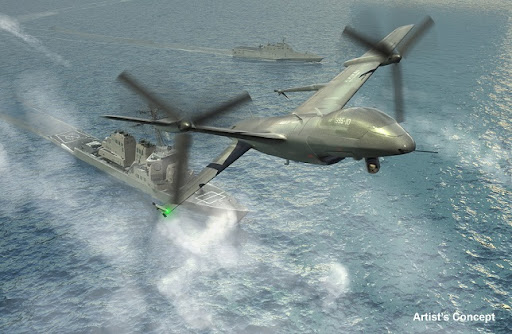In an era where military technology is evolving at an unprecedented pace, we find ourselves on the brink of a new age of warfare. From hypersonic drones to transformative exoskeleton suits, these advancements are not just concepts from science fiction; they are becoming a reality. This article explores 10 of the most advanced military technologies currently in development, showcasing their potential to reshape the battlefield.
10. Hunter 2S: The Future of Drone Warfare

The Hunter 2S is a groundbreaking tube-launched swarming drone system that was unveiled in 2023. This innovative technology is equipped with a variety of sensors, including cameras and radar, allowing it to navigate complex environments and avoid obstacles. The system can be mounted on the back of armored or artillery vehicles, enabling the launch of all 21 drones within a mere 60 seconds.
What sets the Hunter 2S apart is its ability to communicate and coordinate autonomously with other drones. This swarming capability allows the drones to overwhelm enemy defenses by attacking from multiple angles, fundamentally changing the dynamics of aerial combat. As militaries around the world explore this technology, the Hunter 2S has the potential to revolutionize modern warfare.
9. Manta Ray UUV: Stealth Underwater Operations

Next on our list is the Manta Ray UUV, an innovative underwater drone designed for extended operations beneath the waves. This drone excels in deep-sea reconnaissance and can operate for prolonged periods without surfacing, making it an invaluable asset for naval intelligence and surveillance.
The Manta Ray’s design emphasizes stealth and endurance, allowing it to cover vast distances while carrying significant payloads. As the program develops, it aims to demonstrate critical technologies for a new class of unmanned underwater vehicles (UUVs) that can perform covert operations, enhancing naval capabilities in an increasingly complex maritime environment.
8. Quantum Radar: A New Era of Detection

At number eight, we have Quantum Radar, a technology still in its early stages but with the potential to revolutionize traditional radar systems. One of its main advantages is the ability to detect smaller and stealthier targets that conventional radar cannot identify.
This advanced radar system could significantly improve military surveillance, air traffic control, and even weather forecasting. As nations invest in this technology, the implications for both military and civilian applications are profound, potentially changing how we perceive and interact with our environment.
7. Tactically Exploited Reconnaissance: A Game Changer for UAVs

The Tactically Exploited Reconnaissance (TER) program, led by DARPA, aims to develop an unmanned aerial vehicle (UAV) capable of vertical takeoff and landing. This UAV will be equipped with various sensors, including cameras and electronic warfare systems, enhancing the U.S. Navy’s intelligence, surveillance, and reconnaissance capabilities.
The ability to operate from small ships and platforms without runways makes the TER UAV a versatile tool in modern naval operations. As this technology matures, it promises to provide significant advantages in gathering intelligence and conducting operations in challenging environments.
6. Military Exoskeletons: Enhancing Soldier Capabilities

Military exoskeletons are wearable suits designed to enhance the physical capabilities of soldiers, boosting their strength and endurance. These suits offer increased mobility and protection, allowing troops to perform tasks that would otherwise be too strenuous or impossible.
As this technology continues to develop, it holds the potential to transform ground combat. By providing individual soldiers with enhanced physical abilities, military exoskeletons could change the way battles are fought, giving troops a distinct advantage in strength and stamina.
5. Orca XLUUV: The Next Generation of Underwater Vehicles

The Orca XLUUV, or extra-large unmanned underwater vehicle, is being developed by Boeing for the U.S. Navy. This next-generation autonomous vehicle is designed to be modular and scalable, with a payload capacity of up to 8 tons, making it suitable for various missions, including intelligence, surveillance, and anti-submarine warfare.
Powered by a diesel-electric hybrid propulsion system, the Orca boasts an impressive range of over 6,500 nautical miles and can operate for more than 120 days. As this technology evolves, it promises to enhance naval capabilities significantly, providing a versatile platform for a range of underwater operations.
4. Adaptive Camouflage: The Future of Stealth

Adaptive Camouflage is an innovative active camouflage system designed to shield military vehicles from thermal imaging detection. Utilizing an array of hexagonal Peltier plates, this system can quickly adjust its temperature to mimic the surrounding environment, making vehicles nearly undetectable to thermal sensors.
This technology is suitable for various environments, from forests and deserts to urban settings. By enhancing the stealth capabilities of ground vehicles, adaptive camouflage could play a crucial role in modern military operations, allowing forces to operate undetected in hostile territories.
3. Unmanned Submarine Hunters: The New Wave of Naval Warfare

Unmanned Submarine Hunters represent a new breed of underwater vehicles designed to autonomously identify, track, and engage enemy submarines. Equipped with advanced sensors like sonar and cameras, these UUVs offer a cost-effective and stealthy alternative to traditional submarine hunting methods.
Their autonomous nature significantly reduces human risk while extending operational range and enhancing stealth capabilities. As navies around the world adopt this technology, it could redefine underwater warfare and improve maritime security.
2. Autonomous Multi-Domain Launcher: The Future of Artillery

The Autonomous Multi-Domain Launcher (AMDL) is a next-generation artillery system being developed by the U.S. military. Designed to be highly mobile and unmanned, this weapon system can deploy long-range precision attacks across various terrains, eliminating risks to human lives.
Based on the M109A7 Paladin self-propelled howitzer chassis, the AMDL is equipped with a new turret that accommodates various launchers. By integrating data from multiple sensors, this system can detect and track targets, allowing for the calculation of firing solutions and launching munitions without human intervention.
1. Hermeus Darkhorse: The Future of Hypersonic Flight

Taking the top spot is the Hermeus Darkhorse, developed by Hermeus Aerospace. This hypersonic unmanned aerial vehicle is designed to reach speeds of Mach 5, boasting a range of over 4,000 miles. This capability would shatter records previously held by legendary aircraft.
The Darkhorse is poised to play multiple roles, from intelligence gathering and precision strikes to fast troop and supply transportation. With its stealth design, this revolutionary advancement can venture into high-risk areas, deliver various payloads, and avoid enemy detection and interception. As Hermeus Aerospace plans its first test flight in 2025, the Darkhorse represents the future of military aviation.




























